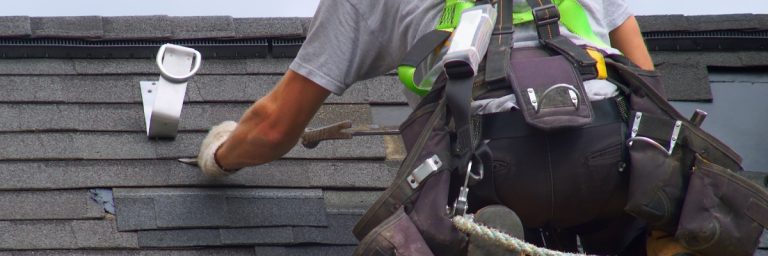Painting Exterior Brick: A Complete Guide for a Fresh, Modern Look
Painting exterior brick is a trend that continues to gain popularity among homeowners and renovators looking to give their home a fresh, modern update. While brick exteriors have long been prized for their classic, rugged appearance, more and more people are embracing paint as a way to rejuvenate their home’s curb appeal. But before picking up a brush, there are essential things to consider to ensure your painted brick exterior stands the test of time. In this guide, we’ll dive into everything you need to know about painting exterior brick—from preparation to paint choices and maintenance.
Why Paint Exterior Brick?
There are several reasons homeowners choose to paint their brick exteriors. Here are some of the most common:
Improved Aesthetic Appeal
One of the biggest motivations for painting exterior brick is purely aesthetic. Whether you’re aiming for a sleek, modern look with white or black paint, or a cozy, cottage-style vibe with soft neutrals, painting brick allows you to customize your home’s appearance to match your personal style.
Boost Property Value
A well-painted brick home can boost curb appeal significantly, potentially increasing the value of your property. First impressions matter, especially in real estate, and a fresh coat of paint can make your home stand out in the neighborhood.
Extra Protection Against the Elements
Quality paint creates a protective layer that can shield brick from moisture, mold, and mildew. This can be particularly beneficial in harsh climates or older homes with porous brick that may be more prone to absorbing water.
Things to Consider Before Painting Exterior Brick
While painting brick can yield great results, it’s not a decision to take lightly. Here are a few key things to consider before starting your project:
Painted Brick Is a Long-Term Commitment
Once you paint brick, it’s very difficult to return to its original appearance. Removing paint from brick is expensive and time-consuming. Be sure you’re committed to the painted look before proceeding.
Brick Must Be in Good Condition
Paint should never be used to hide structural problems. If your brick is crumbling, damaged, or has significant water infiltration issues, those problems must be addressed before painting. Applying paint to compromised brick can trap moisture and worsen existing problems.
Climate and Moisture Matter
Brick is naturally breathable and porous. Painting it can trap moisture inside the wall system if it’s not done properly. That’s why it’s essential to use breathable paint and ensure proper sealing and caulking around windows, doors, and trim.
How to Paint Exterior Brick: Step-by-Step
Painting brick isn’t the same as painting siding or drywall. Here’s a step-by-step guide to doing it the right way:
Step 1: Clean the Brick Thoroughly
Dirt, mildew, and efflorescence (white, chalky deposits) can all prevent paint from adhering properly. Use a stiff brush and a mild detergent or trisodium phosphate (TSP) solution to scrub the brick clean. A pressure washer can also be helpful but should be used cautiously to avoid damaging the brick surface.
Step 2: Repair Damaged Areas
Fill in any cracks or damaged mortar joints using a mortar repair compound. Let repairs cure fully before moving forward. This is also a good time to check for signs of water damage or leaks.
Step 3: Apply Masonry Primer
Use a high-quality masonry primer designed for brick and porous surfaces. Primer helps the paint adhere better and ensures even coverage. Apply the primer with a brush, roller, or sprayer depending on the texture of your brick.
Step 4: Choose the Right Paint
Use a breathable, elastomeric paint specifically designed for masonry surfaces. These paints are formulated to expand and contract with the brick while allowing moisture to escape. Popular options include mineral-based paints, acrylic latex paint for masonry, or limewash (for a more traditional finish).
Step 5: Apply Paint in Thin, Even Coats
Two coats are typically recommended for full, even coverage. Allow the first coat to dry completely before applying the second. Make sure to paint during mild, dry weather—ideally when temperatures are between 50–85°F and humidity is low.
Popular Color Choices for Painted Brick
Your color choice can dramatically affect your home’s appearance and personality. Some of the most popular choices for painting exterior brick include:
- White: A timeless, clean look that brightens the exterior and works well with various architectural styles.
- Black: Bold, modern, and sleek—black brick makes a statement and contrasts beautifully with greenery and metal accents.
- Gray: Sophisticated and versatile, gray is a go-to for both contemporary and traditional homes.
- Taupe and Beige: Warm, earthy tones that blend seamlessly with natural landscapes and wooden accents.
Maintaining Painted Exterior Brick
While painted brick is relatively low-maintenance, it’s not maintenance-free. Here’s how to keep it looking great over time:
Regular Cleaning
Use a garden hose or soft-bristle brush to remove dirt and mildew once or twice a year. Avoid harsh chemicals that could damage the paint or underlying brick.
Touch Up Paint as Needed
Over time, exposure to sun, rain, and wind may cause paint to fade or chip. Keep a small amount of your chosen paint on hand for touch-ups and maintenance.
Monitor for Moisture or Damage
Inspect painted brick annually for signs of moisture issues, cracks, or peeling. Address these early to avoid major repairs later on.
Should You Hire a Professional?
While DIY painting is possible, hiring a professional can save time and ensure the job is done right. Professionals have access to commercial-grade materials and equipment that allow for better prep and finish. If your home is large, has high walls, or if your brick is in questionable condition, it’s worth consulting with a painting contractor experienced in exterior masonry.
Conclusion: Is Painting Exterior Brick Worth It?
Painting exterior brick is a great way to refresh your home’s look, protect against the elements, and increase curb appeal. When done correctly—with the right materials, prep, and care—it can transform your property for the better. However, it’s a significant commitment, so weigh the pros and cons, and don’t skip crucial steps in the process.
Whether you choose classic white, a bold black, or something in between, painting your exterior brick can breathe new life into your home and give it a customized, standout finish that lasts for years to come.




